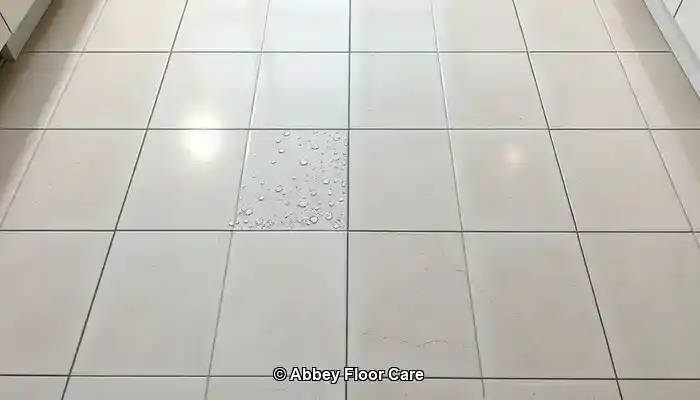
Last Updated on October 2, 2025 by David
Discover the Ultimate Grout Sealing Techniques for Long-Lasting Protection
-
- Grout is highly porous, making it prone to absorbing moisture, dirt, and bacteria. Effective sealing is crucial for ensuring enduring durability and hygiene in tiled environments.
- Penetrating sealers are strongly recommended for most residences in Surrey, offering deep protection while remaining invisible on the surface.
- Surface sealers can enhance the visual appeal of tiled areas but necessitate more frequent reapplication, making them ideal for low-traffic zones or decorative spaces.
- Water-based sealers are perfect for indoor applications due to their safety and ease of use, while solvent-based sealers provide superior durability but require proper ventilation during application.
- Application technique is crucial: Employing a brush-on method guarantees precise coverage, while spray-on techniques can expedite the process but may compromise accuracy.
- Multiple coats enhance performance, especially in high-traffic or moisture-prone areas that require additional protection.
- Regular maintenance is vital: Aim to reseal every 12 to 18 months and utilise pH-neutral cleaners to uphold the integrity of the sealant.
- Old grout can be successfully sealed after thorough cleaning and repair, improving both its protective qualities and visual appeal.
- Epoxy grout does not need sealing, although the surrounding tiles can still benefit from a protective sealant.
- Indicators of sealant wear include water absorption, staining, and a chalky texture—these signs indicate the necessity for resealing.
The Crucial Importance of Grout Sealing in Your Home
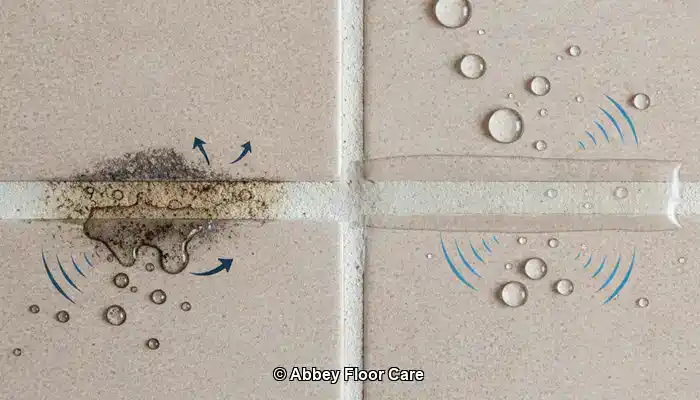
The maintenance of grout is frequently overlooked in the care of tiled surfaces, yet it plays an indispensable role in enhancing the aesthetics and longevity of areas such as kitchens, bathrooms, hallways, and conservatories. Acting as the filler between tiles, grout secures them in place while simultaneously preventing moisture infiltration. Despite its essential role, grout is inherently vulnerable due to its porous nature, which allows it to absorb water, dirt, oils, and cleaning agents. Over time, such absorption can lead to staining, discolouration, and even structural degradation.
Our Expert Recommendations for Daily Grout Maintenance
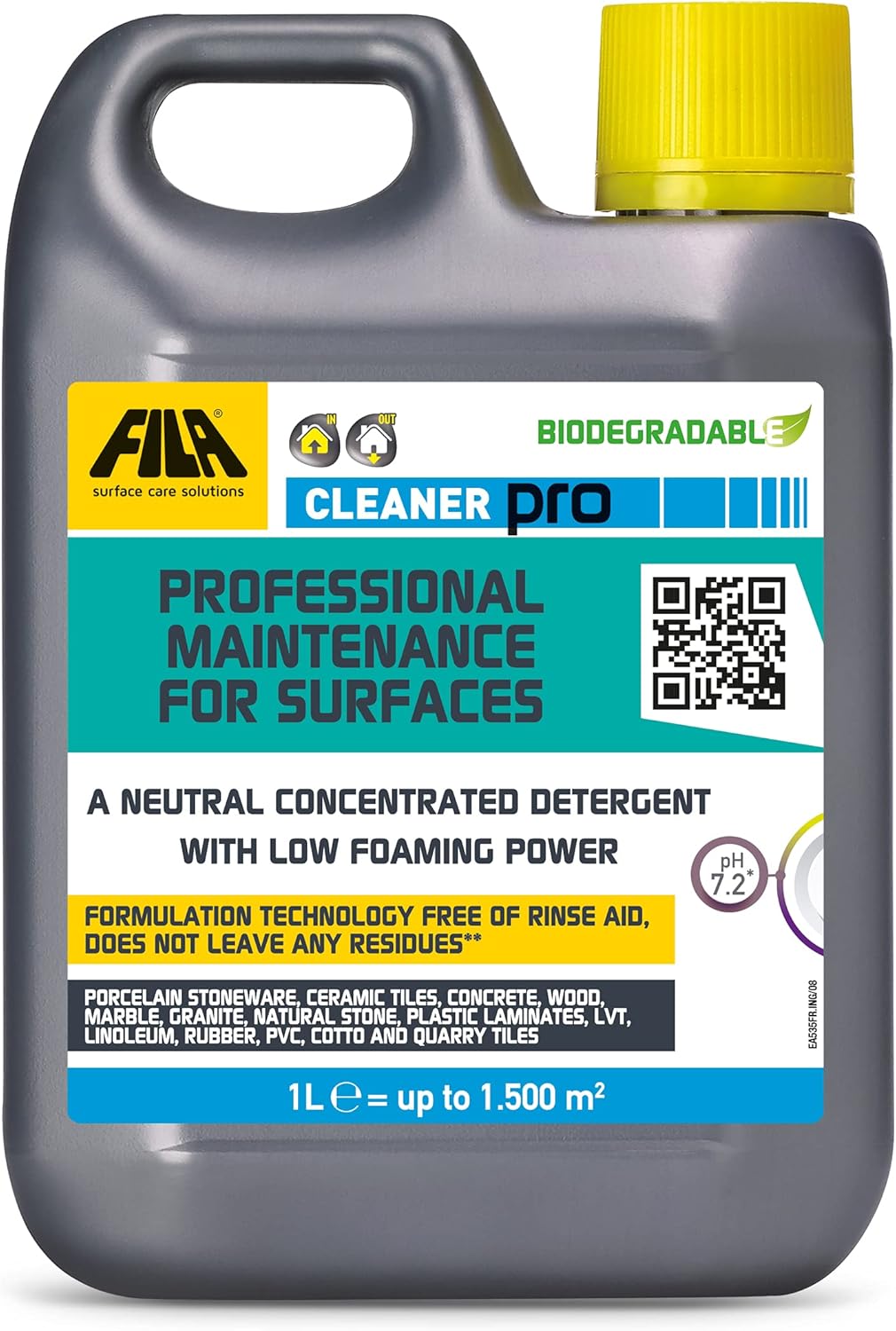
Fila Pro Floor Cleaner
|
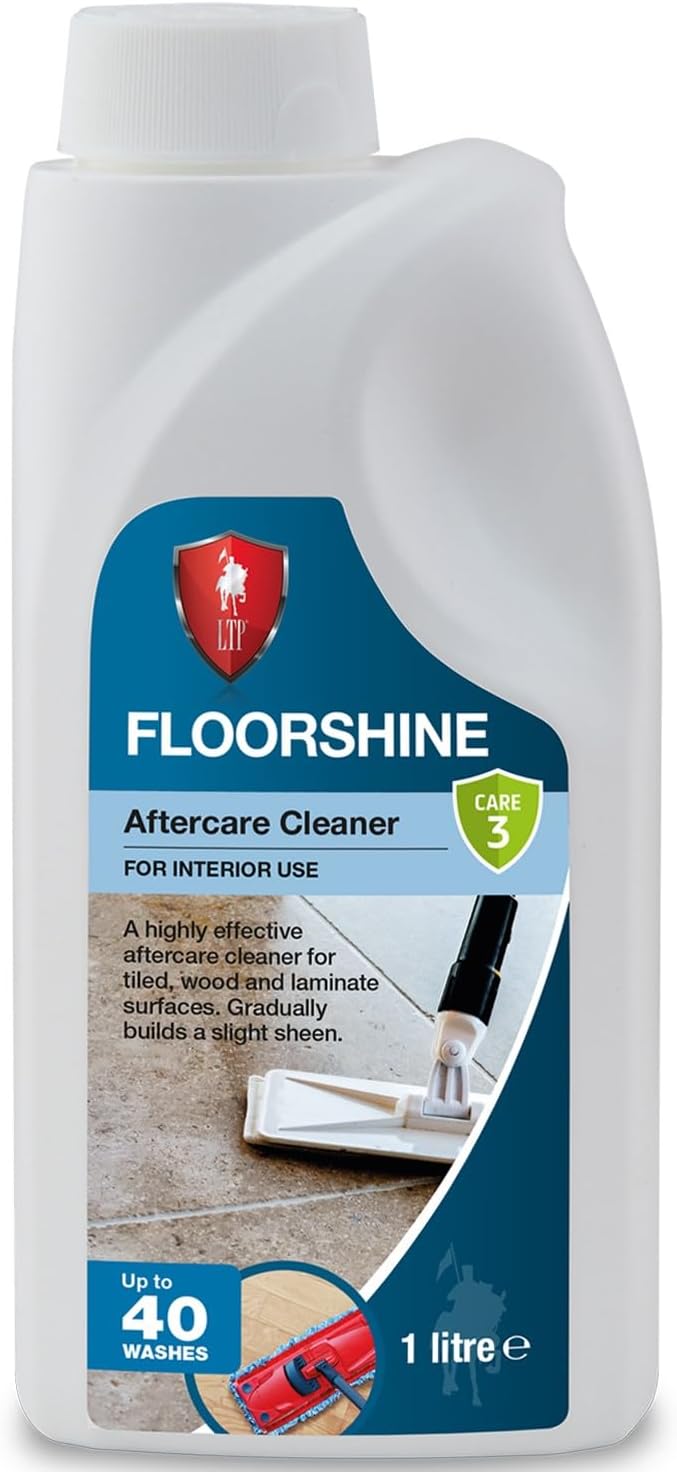
LTP Floorshine
|
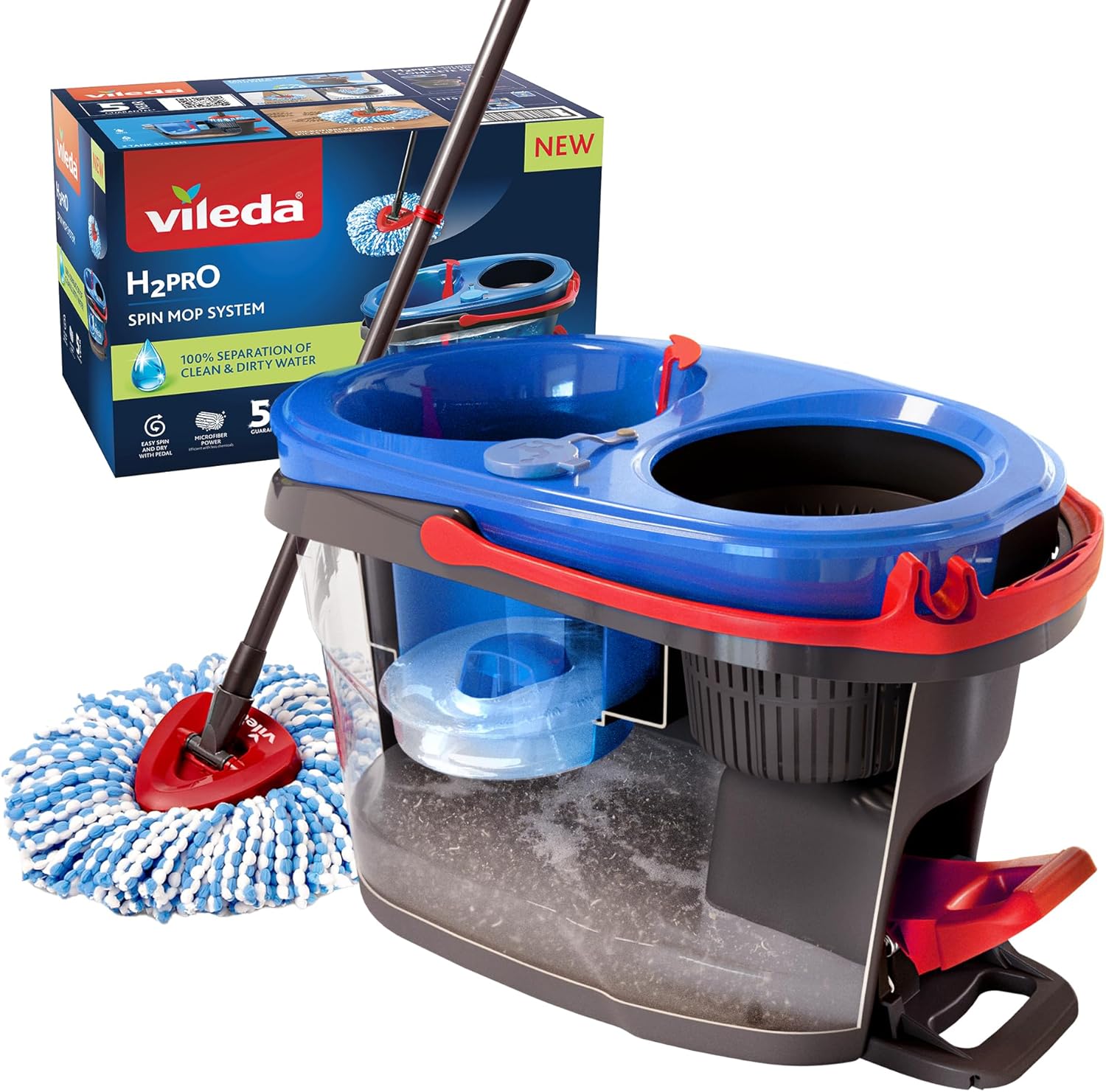
Vileda H2PrO Spin Mop System
|
In Surrey, where tiled surfaces are prevalent in both contemporary and traditional homes, sealing grout represents one of the most effective methods to safeguard your investment. Without the right sealant, grout can quickly accumulate dirt and grime, particularly in high-traffic zones or areas susceptible to moisture and spills. Take, for instance, a bustling kitchen where cooking oils may splatter or a bathroom where steam and soap residue settle into the grout lines—unsealed grout in such settings can swiftly transform from clean and pristine to dull and dirty.
Moreover, unsealed grout can become a breeding ground for bacteria and mould, which is especially concerning in areas like showers and splashbacks where moisture is prevalent. Once mould establishes itself, it not only becomes unsightly but also challenging to remove without harsh chemicals that may damage adjacent tiles. By sealing the grout, you create a protective barrier that repels moisture and contaminants, thereby simplifying the maintenance of a hygienic living environment.
Another compelling reason for sealing grout is the enhancement of longevity. Exposed grout—subject to foot traffic, cleaning agents, and environmental factors—will deteriorate much more rapidly. This decay can lead to cracks, loose tiles, and expensive repairs. A quality grout sealer can significantly prolong the lifespan of your tiled surfaces by fortifying the grout’s structure and averting premature wear.
Furthermore, sealing grout extends beyond newly installed tiles; older grout can—and should—be sealed following thorough cleaning. In fact, the resealing process is a vital aspect of ongoing maintenance. Many homeowners in Surrey opt to reseal their grout every 12 to 18 months, depending on usage and the type of sealer applied. This routine upkeep guarantees that grout remains protected and continues to function effectively.
For those worried about how sealants might affect the appearance of tiles, modern products are formulated to be invisible once dried. They do not alter the colour or texture of your grout and are safe for use on a variety of tile materials, including ceramic, porcelain, and natural stone. Some sealers even offer the added advantage of slightly enhancing the grout's colour, giving it a refreshed appearance without the need for regrouting.
In essence, sealing grout is not merely a luxury—it is an essential practice. It acts as a defence against moisture, stains, bacteria, and wear, all while preserving the aesthetic quality of your tiled surfaces. Whether you are renovating a bathroom or maintaining a frequently used kitchen floor, investing in a high-quality grout sealer is one of the most prudent decisions you can make for your home. In Surrey, where homeowners appreciate both aesthetics and functionality, grout sealing is a fundamental component of long-term property maintenance.
Exploring the Different Types of Grout Sealers for Your Home

Understanding the Distinctions: Penetrating Sealers Versus Surface Sealers
When it comes to safeguarding grout over time, one of the initial decisions homeowners must make is whether to opt for penetrating sealers or surface sealers. Penetrating sealers are engineered to penetrate deeply into the grout, forming a protective barrier beneath the surface. These sealers bond with the internal structure of the grout, making them highly effective at repelling moisture, oils, and stains without altering the appearance of the grout or surrounding tiles. They are particularly crucial in areas that frequently encounter water exposure, such as bathrooms, kitchens, and splashbacks.
In contrast, surface sealers rest atop the grout, forming a visible layer. These sealers can enhance the grout's colour and provide a slight sheen, which some homeowners find appealing for decorative finishes. However, due to their surface-level application, they are more susceptible to wear and may require more frequent reapplication. Surface sealers are ideally suited for low-traffic areas or spaces where aesthetic enhancement is paramount. For example, a decorative tiled feature wall or a guest bathroom may benefit from a surface sealer that adds gloss and depth to the grout lines.
Evaluating Water-Based and Solvent-Based Sealers: Essential Insights for Homeowners
Another critical differentiation lies between water-based sealers and solvent-based sealers. Water-based sealers are gaining popularity among homeowners in Surrey due to their low VOC content, making them safer for indoor use and environmentally friendly. They are straightforward to apply, dry quickly, and are suitable for most residential applications. Water-based sealers are particularly ideal for families with children or pets, as they emit fewer fumes and are generally gentler on surrounding surfaces.
On the contrary, solvent-based sealers provide deeper penetration and enhanced durability. They are often employed in commercial settings or outdoor areas where durability is of utmost importance. While they offer excellent resistance to stains and moisture, they require proper ventilation during application and may not be advisable for enclosed spaces. Homeowners choosing solvent-based sealers should take care to protect adjacent surfaces and ensure adequate airflow during use.
Selecting the Perfect Sealer for Homes in Surrey
For most residences in Surrey, a water-based penetrating sealer provides the ideal balance of safety, effectiveness, and ease of maintenance. It offers invisible protection that does not alter the grout or tile appearance and is suitable for both indoor and outdoor applications. This type of sealer aligns well with the diverse tiled surfaces found in Surrey homes, including ceramic kitchen floors, porcelain bathroom tiles, and natural stone splashbacks.
Nevertheless, the best choice ultimately hinges on the specific requirements of the space. High-traffic areas, such as hallways and kitchens, greatly benefit from penetrating sealers that provide deep, lasting protection. Decorative zones or surfaces where visual enhancement is desired might be better served by a surface sealer that adds gloss and colour depth. For outdoor patios or commercial environments, solvent-based alternatives may be worth considering due to their durability.
It is also essential to match the sealer with the type of grout—cement-based grout, being highly porous, benefits significantly from sealing. Conversely, epoxy grout, which is non-porous and moisture-resistant, typically does not require sealing; however, surrounding tiles may still benefit from a protective coating.
Choosing the right grout sealer involves more than just performance; it requires alignment with your lifestyle, tile material, and long-term maintenance objectives. In the next section, we will delve into how various application methods can influence the efficiency of your chosen sealer and ensure enduring protection.
Enhancing Grout Protection Through Effective Application Techniques
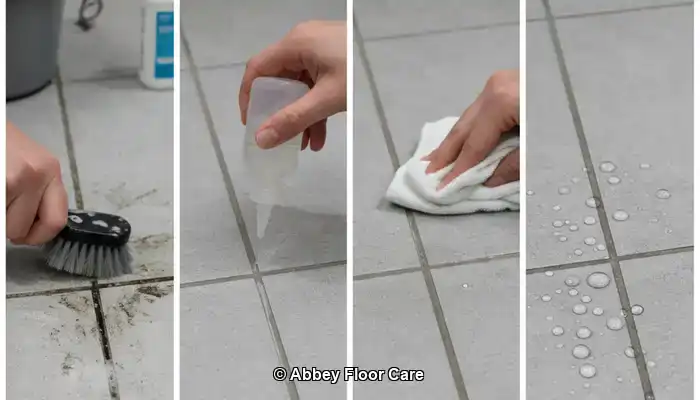
Weighing the Pros and Cons of Brush-On and Spray-On Techniques for Grout Sealing
When it comes to applying grout sealer, the chosen method can significantly impact the effectiveness and longevity of the protective barrier created. The two most prevalent techniques are brush-on and spray-on applications, each providing distinct advantages depending on the type of grout, tile arrangement, and required precision.
Brush-on application is regarded as the most reliable method for sealing grout. This technique allows for targeted coverage, ensuring that the sealer penetrates deeply into the grout lines without saturating the adjacent tiles. This precision is particularly critical in homes with natural stone or textured tiles, where excessive sealer can leave a hazy residue or alter the tile's appearance. By utilising a small brush or applicator bottle with a roller tip, homeowners can control the amount of product applied, minimising waste. Although this process is more time-consuming, the accuracy it affords makes it especially suitable for high-value surfaces or intricate tile designs.
In contrast, spray-on sealers offer speed and convenience. They are particularly effective for expansive areas with uniform tile layouts, such as open-plan kitchens or tiled hallways. Employing a fine mist applicator, the sealer can be evenly distributed across the surface, quickly reaching the grout lines. However, spray-on methods may lack precision, particularly around decorative tiles or uneven surfaces. Overspray is a common concern; if not wiped away promptly, it can result in streaks or dull patches on glossy tiles.
For homeowners in Surrey who appreciate both efficiency and quality, a hybrid approach may yield the best results. Start with a spray-on application to cover the main area, then follow up with a brush to touch up corners, edges, and any missed grout lines. This strategy ensures comprehensive coverage while maintaining control over the final appearance.
Regardless of the chosen method, it is essential to work in manageable sections and avoid rushing the process. Proper application is key to achieving a long-lasting seal that safeguards against moisture, staining, and wear.
Determining the Optimal Number of Coats for Effective Sealing
The number of coats required for successful grout sealing varies based on the sealer employed, the grout's porosity, and the conditions of the area. Most manufacturers recommend applying at least two coats to achieve optimal protection; however, in certain circumstances, more coats may be necessary.
The initial coat acts as a primer, soaking into the grout and initiating the protective process. It is vital to allow this coat to absorb and dry completely before applying the second layer. The second coat reinforces the barrier, ensuring the grout is thoroughly sealed and resistant to moisture and contaminants.
In high-traffic areas, such as kitchens and entryways, or in rooms that frequently encounter water, like bathrooms, a third coat may be beneficial. This is especially true for older grout that has been previously sealed and may exhibit uneven absorption. Applying multiple coats guarantees that any worn or porous sections receive adequate protection.
Timing between coats is equally crucial. Rushing through the process can lead to poor adhesion and compromised effectiveness. Most water-based sealers necessitate a wait time of 30 to 60 minutes between coats, while solvent-based products may require longer intervals. Always consult the manufacturer's guidelines and conduct a small area test first to gauge the absorption rate.
For homeowners in Surrey seeking durable results, dedicating time to properly apply multiple coats can save both money and effort in the long run. This approach reduces the need for frequent resealing and helps maintain the appearance and integrity of tiled surfaces.
Common Mistakes to Avoid During Grout Sealing
Even with the best products and intentions, grout sealing can go awry if common mistakes are made. One of the most prevalent errors is applying sealer to dirty or damp grout. Sealing over grime or moisture traps contaminants beneath the surface, leading to staining, discolouration, and reduced effectiveness. Always ensure the grout is thoroughly cleaned and allowed to dry completely—ideally for 24 hours—before sealing.
Another frequent mistake is using the inappropriate type of sealer for the grout or tile material. For instance, applying a surface sealer to highly porous grout may result in uneven coverage and insufficient protection. Similarly, using a solvent-based sealer in poorly ventilated areas can introduce strong fumes and potential health risks. Matching the sealer to the specific needs of the space is essential.
Overapplication is another concern. Applying too much sealer at once can lead to pooling, sticky residue, or a cloudy finish on tiles. It is preferable to apply thin, even coats and gradually build up protection. Wipe away any excess immediately to prevent hazing on the tile surface.
Lastly, neglecting to test a small area prior to applying the latest treatment can lead to unintended results. Certain sealers may slightly darken grout or alter the sheen of nearby tiles. Testing is vital to ensure compatibility and allows for adjustments in technique if necessary.
By steering clear of these common pitfalls, you can ensure that your grout sealing project delivers the protection and finish you anticipate. In the subsequent section, we will explore how to maintain sealed grout over time and recognise when it’s time to reseal.
Key Maintenance Tips for Grout After Sealing
How Frequently Should You Reseal Grout for Optimal Performance?
Once grout has been sealed, it can be tempting to assume the job is complete for the foreseeable future—but like most protective treatments, grout sealant possesses a limited lifespan. Over time, exposure to foot traffic, cleaning agents, moisture, and general wear will gradually degrade the sealant, leaving grout vulnerable to staining and deterioration. To maintain optimal protection, grout should be resealed every 12 to 18 months. This timeframe can vary based on the location and usage of the tiled surface.
In high-traffic areas such as kitchen floors, entryways, and family bathrooms, grout experiences constant wear. These spaces often necessitate resealing closer to the 12-month mark. For instance, kitchens are exposed to cooking oils, food spills, and frequent mopping—all of which can hasten the degradation of the sealant. Bathrooms contend with humidity, soap residue, and water splashes, which also accelerate wear and tear. Conversely, low-traffic areas, such as guest bathrooms or decorative tiled walls, may maintain their sealant effectiveness for up to 18 months or longer.
The type of sealer employed also influences the frequency of resealing required. Penetrating sealers generally last longer than surface sealers, especially when applied correctly in multiple coats, providing more durable and long-lasting protection. Water-based sealers may require more frequent reapplication compared to solvent-based counterparts, although they are easier to use and safer for indoor environments.
Homeowners in Surrey who prioritise long-term property maintenance often incorporate grout resealing into their annual upkeep schedule. This proactive approach not only prevents costly repairs but also keeps tiled surfaces looking fresh and clean. It provides an opportunity to inspect grout for any signs of damage, such as cracking or discolouration, which may indicate deeper issues.
Professional resealing services can offer additional peace of mind, particularly for larger areas or natural stone installations. Experts can evaluate the condition of the existing sealant, perform a deep clean, and apply the appropriate product tailored to your specific grout and tile type. Whether you decide to tackle resealing yourself or engage a specialist, consistency is key for preserving the integrity and appearance of your grout over time.
Recommended Cleaning Products That Preserve Sealant Integrity
Maintaining sealed grout involves more than just timing; it also necessitates using the appropriate cleaning products. Harsh or acidic cleaners can prematurely degrade sealant, leaving grout exposed and vulnerable. To extend the life of your grout sealer, it is essential to utilise pH-neutral cleaning solutions specifically formulated for sealed surfaces.
pH-neutral cleaners are both gentle and effective. They eliminate everyday dirt, grease, and grime without compromising the protective barrier established by the sealant. These products are safe for use on ceramic, porcelain, and natural stone tiles, making them ideal for cleaning various surfaces in kitchens, bathrooms, and hallways. Many reputable brands offer tile and grout cleaners labelled as “sealant-safe” or “pH-neutral,” simplifying the selection process for homeowners.
Conversely, common household cleaners such as bleach, vinegar, and ammonia-based products can be highly corrosive. While they may appear effective for cleaning, they often strip away layers of sealant, leaving grout porous and susceptible to staining. Acidic cleaners are particularly damaging to natural stone tiles and cement-based grout, which are sensitive to pH fluctuations. Over time, the repeated use of these products can result in discolouration, etching, and even structural weakening of the grout.
For homeowners in Surrey who prioritise eco-friendly cleaning, several non-toxic, biodegradable options deliver sealant-safe performance. These products are perfect for families with children or pets, contributing to a healthier indoor environment. Microfibre mops and soft-bristle brushes can also assist in maintaining grout cleanliness without the need for abrasive scrubbing.
Additionally, it is crucial to adhere to proper cleaning techniques. Avoid soaking the grout with excessive water, as this can seep into the joints and weaken the sealant. Instead, employ damp mops or cloths and ensure the area is dried thoroughly after cleaning. Promptly spot-clean spills to prevent staining, and avoid using steam cleaners unless the grout and sealant are rated for high-temperature exposure.
By selecting the right cleaning products and methods, you can significantly prolong the lifespan of your grout sealant and maintain the beauty of your tiled surfaces. This simple step in your maintenance routine yields long-term durability and visual appeal.
Identifying the Signs That Your Grout Requires Resealing
Even with regular maintenance, grout sealant will inevitably wear down. Being able to identify the signs that your grout necessitates resealing can empower you to take action before damage occurs. One of the most reliable indicators is how water behaves on the surface. If water fails to bead up and instead seeps into the grout, the sealant has likely worn off, indicating that the protective barrier is no longer effective.
Staining is another clear sign. If your grout begins to darken or present spots after spills or cleaning, it is absorbing moisture and contaminants—conditions that sealed grout should effectively resist. Discolouration may develop gradually, especially in areas that see frequent use or cleaning. In kitchens, be vigilant for oil or food stains; in bathrooms, watch for soap scum or mildew marks.
Changes in texture can also signal sealant degradation. Grout that feels chalky, rough, or powdery may be losing its structural integrity. This can lead to crumbling or cracking, which not only affects appearance but also compromises the stability of the tiles. In some cases, grout may begin to flake or pull away from the edges of the tiles, indicating a deeper level of deterioration.
Visual indicators are essential, but timing is also critical. If it has been over 18 months since your last sealing—or if you cannot recall when it was last done—it is prudent to inspect your grout closely. A simple water test can be conducted: apply a few drops of water to the grout and observe the outcome. If the water is absorbed rather than repelled, it is time to reseal.
For homeowners in Surrey who are committed to long-term property care, recognising these signs early can prevent costly repairs and maintain the aesthetic quality of tiled surfaces. Resealing not only restores protection but also refreshes the appearance of grout, ensuring that floors and walls look cleaner and newer.
Whether you're caring for a newly renovated kitchen or maintaining a vintage bathroom, remaining vigilant to these signs ensures your grout remains sealed, strong, and visually appealing. In the next section, we will address common questions regarding grout sealing to assist you in making informed decisions for your home.
Insights and Strategies for Lasting Grout Protection
Grout sealing may appear to be a minor detail in the broader context of home maintenance, yet its implications are significant. From preserving the aesthetic appeal of your tiled surfaces to protecting against moisture, stains, and structural damage, the proper sealing method can greatly influence longevity. For homeowners in Surrey who value both style and durability, understanding the nuances of grout sealing is essential for maintaining a clean, healthy, and enduring home environment.
Throughout this guide, we have explored the reasons why grout necessitates sealing, the types of sealers available, the most effective application techniques, and how to maintain sealed grout over time. We have also addressed common questions regarding sealing old grout, the functionality of epoxy grout, and the typical lifespan of sealers. Each of these components contributes to a holistic approach to grout care—one that transcends surface-level cleaning and prioritises long-term protection.
The Significance of Selecting the Right Sealer for Your Requirements
The most effective sealing strategy commences with choosing the right product. Water-based penetrating sealers generally provide the best solution for Surrey homes, offering deep protection without altering the appearance of your tiles. Application should be methodical and precise, with careful attention given to cleaning, drying, and layering the sealer appropriately. Equally important is maintenance: using pH-neutral cleaners, avoiding harsh chemicals, and adhering to a regular resealing schedule will keep your grout looking fresh and performing optimally.
Should You Consider Professional Assistance for Grout Sealing?
It may be beneficial to consider professional assistance. While many homeowners are comfortable with DIY sealing, complex tile layouts, natural stone surfaces, or older grout may benefit from expert care. Tile and stone specialists can evaluate your surfaces, recommend the most suitable products, and ensure flawless application. This is particularly valuable in high-use areas or heritage properties where preservation is crucial.
For those managing multiple tiled spaces—such as kitchens, bathrooms, hallways, and patios—establishing a grout care calendar can help keep track of resealing and cleaning routines. Documenting the dates when sealers were applied and which products were used simplifies future maintenance.
Ultimately, grout sealing is about more than just protection—it is about peace of mind. Knowing that your tiled surfaces are safeguarded against wear and tear enables you to enjoy your home without the stress of premature damage or expensive repairs. Whether you are renovating a space or simply maintaining what you already have, investing in proper grout care is a wise decision that pays dividends in both appearance and longevity.
If you are ready to take the next step in protecting your grout, consider reaching out to a trusted tile care professional in Surrey. They can provide tailored advice, recommend high-quality products, and ensure your grout is sealed to perfection. Your floors, walls, and splashbacks will thank you—and so will your future self.
Common Queries Regarding Grout Sealing
Can You Effectively Seal Old Grout?
Absolutely—old grout can be sealed, and in many cases, it should be. Over time, grout becomes increasingly vulnerable to staining, moisture absorption, and wear. If it has never been adequately sealed or the existing sealant has worn off, resealing is a wise method to restore protection and enhance appearance. However, sealing old grout requires careful preparation to ensure the new sealant adheres effectively and performs as intended.
The first step is cleaning. Old grout often contains trapped dirt, grease, soap residue, and even mildew, especially in kitchens and bathrooms. These contaminants must be removed before sealing; otherwise, they will be trapped beneath the sealant, causing discolouration and reducing effectiveness. A thorough deep-cleaning is necessary—and in many instances, professional cleaning is advisable. Tile care specialists utilise targeted products and tools to lift stubborn grime without damaging the grout or surrounding tiles.
Once the grout is clean, it must be allowed to dry thoroughly. Moisture trapped in the grout can hinder the sealant’s ability to bond and cure effectively. Depending on the room’s humidity and ventilation, drying may take 24 to 48 hours. During this period, it is advisable to avoid using the area and keep it dry by not exposing it to water.
After cleaning and drying, inspect the grout for damage. Cracks, missing sections, or crumbling areas should be repaired before sealing. Applying sealant over compromised grout will not resolve underlying issues and may lead to further deterioration. Grout repair products are available for DIY fixes, but for extensive damage, professional regrouting may be necessary.
Once the grout is clean, dry, and intact, sealing can proceed. Choose a sealant that is suitable for the type of grout and tile material. Penetrating sealers are typically the best choice for older grout, as they penetrate the surface and reinforce it from within. Carefully apply the sealer, following the manufacturer’s instructions, and allow it to cure completely before using the area.
For homeowners in Surrey with older tiled surfaces—especially in period properties or high-use areas—sealing old grout is a cost-effective way to extend the life of your flooring and enhance hygiene. It is a practical step that improves both function and aesthetics, and when executed correctly, it can make old grout appear almost new again.
Is Sealing Necessary for Epoxy Grout?
Epoxy grout is a unique material that differs significantly from traditional cement-based grout. Composed of a combination of epoxy resins and filler powder, it is non-porous, highly resistant to moisture, and exceptionally durable. Due to these properties, epoxy grout does not require sealing in the same manner as cement-based grout.
Its non-porous nature means that liquids, oils, and stains are far less likely to penetrate the surface. This makes epoxy grout ideal for areas with high moisture exposure, such as showers, wet rooms, and commercial kitchens. Additionally, it is resistant to cracking and shrinkage, which enhances its long-term performance.
However, while the grout itself does not require sealing, the surrounding materials may still benefit from sealant. Many tiled surfaces—especially those made from natural stones like marble, slate, or travertine—are porous and can benefit from the application of sealant. In these cases, sealing the tiles instead of the grout will help protect the entire surface from staining and moisture damage.
Moreover, some homeowners opt to seal epoxy grout for aesthetic reasons. While it is not necessary for protection, a surface sealer can enhance colour uniformity or add a subtle sheen. This is entirely optional and should only be done with products specifically formulated for use with epoxy grout.
It is also important to note that epoxy grout can be more challenging to work with during installation. It sets quickly and requires precise handling, which is why many homeowners in Surrey prefer professional installation when using epoxy grout. Once installed, however, it provides excellent performance with minimal maintenance required.
In summary, sealing epoxy grout is not required for protection, but surrounding tiles may still benefit from sealant. If you are unsure whether your tiled surface needs sealing, consult a tile care expert who can evaluate the materials and recommend the most effective approach for your home.
What Is the Average Lifespan of Grout Sealer?
The longevity of grout sealer depends on several factors, including the type of sealer used, the location of the grout, and the level of surface maintenance. On average, most grout sealers last between one and three years. However, this timeframe can vary significantly based on usage and environmental conditions.
Penetrating sealers generally possess a longer lifespan than surface sealers. Because they soak into the grout and bond with its internal structure, they provide deeper and more resilient protection. These sealers are best for high-traffic areas and rooms exposed to moisture, such as kitchens and bathrooms. When applied correctly, a high-quality penetrating sealer can remain effective for up to three years.
Surface sealers, which create a protective layer atop the grout, typically have a shorter lifespan. They are more susceptible to wear from foot traffic, cleaning, and abrasion. In busy households or commercial settings, surface sealers may need to be reapplied annually to maintain their effectiveness.
The location of the grout also influences its longevity. Grout in low-traffic areas or decorative installations may retain its sealant longer than grout in frequently used spaces. For instance, a tiled wall in a guest bathroom may not require resealing as often as a kitchen floor or shower enclosure.
Maintenance habits are another key factor. Using pH-neutral cleaners and avoiding harsh chemicals helps preserve the sealant. Regular cleaning with sealant-safe products prevents buildup and reduces the risk of sealant degradation. Promptly spot-cleaning spills and avoiding excessive water exposure can also contribute to a longer sealant life.
To determine whether your grout sealer remains effective, perform a simple water test. Apply a few drops of water to the grout and observe the outcome. If the water beads up and remains on the surface, the sealant is intact. If it soaks in or leaves a dark spot, it is time to reapply the sealant.
For homeowners in Surrey who prioritise long-term property care, scheduling grout resealing every 12 to 18 months is a reliable strategy for maintaining protection against stains and damage. Keeping track of application dates and monitoring grout condition ensures that your tiled surfaces remain clean, durable, and visually appealing.
The Article Which Grout Sealing Method Offers the Best Long-Term Protection? first found on https://www.abbeyfloorcare.co.uk
The Article Grout Sealing Methods: Discover the Best Long-Term Protection appeared first on https://fabritec.org
The Article Grout Sealing Methods for Optimal Long-Term Protection Was Found On https://limitsofstrategy.com
